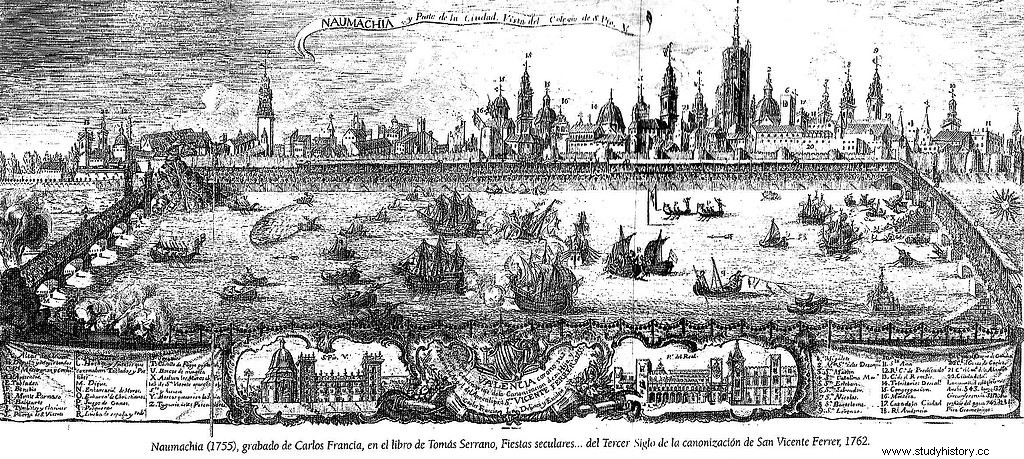50,000 fervent souls, which could house the Colosseum in Rome, did not tire of panting and cheering the naumachias or naval combats that used to be staged with some frequency on the arena of one of the greatest icons of the ancient empire -it was precisely a naumachia with the one in which Emperor Titus inaugurated the Colosseum in Rome in the year 80 of our era. But those theatrical battles that faced biremes, triremes and quadremes, and where those condemned to death or prisoners of war usually fought, not only took place more than two thousand years ago. Felipe IV picked up the legacy and got used to organizing naumaquias in the Buen Retiro pond and the Casa de Campo during the 17th century . The Spanish monarch, a lover of spectacular performances and striking visual and sound effects, ordered these places to be prepared to fictionally recreate the clashes on the high seas that Christians and “infidels” had centuries ago. Said naumaquias hardly respected the original plot of the story because the interest lay in keeping the spectators stunned. And to faith that they achieved it thanks to functions of more than six hours full of floods, rains of fire, furious storms, earthquakes or the parade of hundreds of troupes and armies. No expense was spared.

On occasions, inclement weather marred the act. On June 14, 1639, a naumaquia that had been paid for by the Viceroy of Naples had to be suspended because, according to the chronicles of the time, “such a wind arose that threw lights and potsherds, and there was fear that the gondolas (from where Felipe IV and the nobles of the Court witnessed the shows) sank with His Majesty inside ”. Seven days later that battle was successfully staged.
Valencia was the Spanish city that welcomed the last known naumaquia thanks to the contribution of the boats made by the fishermen. It was held in 1755 to celebrate the third centenary of the canonization of Sant Vicent Ferrer. The acts filled the streets of the capital of the Turia with lights and showy altars. On this occasion, a battle between Moorish and Christian ships between the Real and Trinidad bridges was simulated, with the latter triumphing thanks to the fictitious appearance of the saint.

Collaboration Javier Ramos of Places with History
